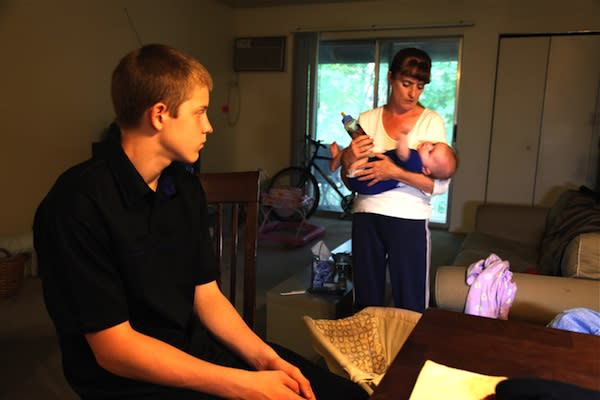 The Lookout
The LookoutMore than 49 million Americans — even more than thought — live in poverty, new measure finds

In September, the government reported that a record 46.6 million Americans were living in poverty. But a new report released Monday by the Census Bureau using a more sophisticated method to measure poverty rates has found that the true figure is even higher: 49.1 million, or 16 percent of all Americans.
It's not just the raw number that's different under the new measure--it's also the breakdown of who's poor and who's not. Using the new Census methods, the share of the poor who are over 65 jumps from 7.6 percent to 12.7 percent. And the share who are under 18 falls from 36.1 percent to 27.7 percent. In other words, kids aren't doing quite as badly as we thought, the report suggests, while seniors are doing far worse.
What accounts for the changes? The Census Bureau's traditional poverty measure has changed little since it was first developed in 1963. The old poverty calculus has several important shortcomings: It doesn't take into account the impact of non-cash government benefits such as food stamps and tax credits; it doesn't include expenses like out-of-pocket medical costs; and it doesn't factor in varying costs of living across the country. The new method, known as the Supplemental Poverty Measure, fixes these problems.
"The new measure is going to give us a better sense of the extent of poverty, and who's poor, and the effect of government programs," Jane Waldfogel, an expert on poverty at the Columbia University School of Social Work, told Yahoo News. "So in all those respects, it's vastly superior."
Take the issue of out-of-pocket medical expenses. Had they not been factored in, the report states, the poverty rate for seniors would be 8.6 percent. Under the new measure, it's 15.9 percent. "So that one element alone is huge," said Waldfogel.
The new findings also demonstrate the value of government programs in keeping Americans out of poverty, Waldfogel said--just as Congress is mulling cuts to some of them. Were it not for the Earned Income Tax Credit, for example, the new measure shows that the child poverty rate would be 22 percent; without food stamps, the rate of child poverty would be 21 percent. With both those programs factored in, it's 18 percent.
"The good news here is that we do have a social safety that is designed to reduce poverty among families with children," said Waldfogel.
The new method also will likely somewhat reduce the salience of the "poverty line" as the be-all and end-all way of measuring poverty. Because Census' revised measure factors in more expenses, it raises that line for a family of four to $24,343 from $22,350. But under the new system, that threshold isn't hard and fast--it varies depending on where you live, and on whether you own your home and therefore aren't paying rent, among other factors.
Want more of our best national affairs stories? Visit The Lookout or connect with us on Facebook and follow us on Twitter.
Other popular Yahoo! News stories:
• Pastor's corporal punishment advice scrutinized after child deaths
• Woman to publicly accuse Herman Cain of harassment
• Herman Cain blames the media for sexual harassment controversy